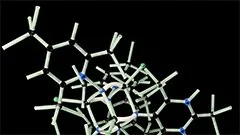Introduction
Protein localization refers to the process by which proteins are transported, distributed, and targeted to their specific locations within a cell or organism. Understanding protein localization is crucial for understanding protein function and overall biological processes. In this course, we will delve into the mechanisms and factors influencing protein localization at various scales, from the molecular level to the cellular and organismal levels.
Importance of Protein Localization
Protein localization plays a critical role in determining the function of proteins within a cell or organism. Mislocalization of proteins can lead to various diseases such as cystic fibrosis, Parkinson's disease, and Huntington's disease. Therefore, understanding protein localization mechanisms is essential for developing therapeutic strategies targeting these diseases.
Protein Localization Mechanisms
Molecular Level
Signal Peptides and Targeting Sequences
Proteins destined for specific locations within a cell or organelle possess signal sequences that act as signals for protein transport. These sequences can be cleaved off during transport, leaving behind a mature protein functional in its new location.
Chaperones and Folding
Chaperone proteins assist in the proper folding of proteins to ensure they assume their native conformation before being targeted to their final destination. Misfolded or aggregated proteins can disrupt cellular functions, leading to diseases such as Alzheimer's disease and prion diseases.
Cellular Level
Nucleus
Proteins destined for the nucleus are transported through nuclear pore complexes (NPCs). The selectivity of NPCs allows for the controlled entry and exit of proteins into and from the nucleus.
Endoplasmic Reticulum (ER)
The ER plays a crucial role in protein folding, modification, and sorting. Proteins are synthesized on ribosomes attached to the ER membrane and then either transported to other organelles or remain in the ER.
Golgi Apparatus
The Golgi apparatus modifies proteins through glycosylation, sulfation, and phosphorylation before transporting them to their final destinations. Proteins are sorted into transport vesicles based on specific targeting signals.
Organismal Level
Plant Cell Wall
Plant cell walls provide structural support and act as a barrier to protect the cell from environmental stresses. Proteins secreted into the cell wall play essential roles in cell growth, defense, and signaling.
Extracellular Matrix (ECM)
The ECM is a complex network of proteins that surrounds cells in multicellular organisms. The ECM plays critical roles in cell adhesion, migration, and signaling during development and disease processes such as cancer metastasis.
Conclusion
Understanding protein localization mechanisms is essential for understanding protein function and overall biological processes. By exploring the mechanisms at the molecular, cellular, and organismal levels, we can gain insights into the intricate network of protein trafficking within cells and organisms. This knowledge can lead to novel therapeutic strategies for treating various diseases caused by protein mislocalization.
MCQ: Test your knowledge!
Do you think you know everything about this course? Don't fall into the traps, train with MCQs! eBiologie has hundreds of questions to help you master this subject.
These courses might interest you
Create a free account to receive courses, MCQs, and advice to succeed in your studies!
eBiologie offers several eBooks containing MCQ series (5 booklets available free for each subscriber).



